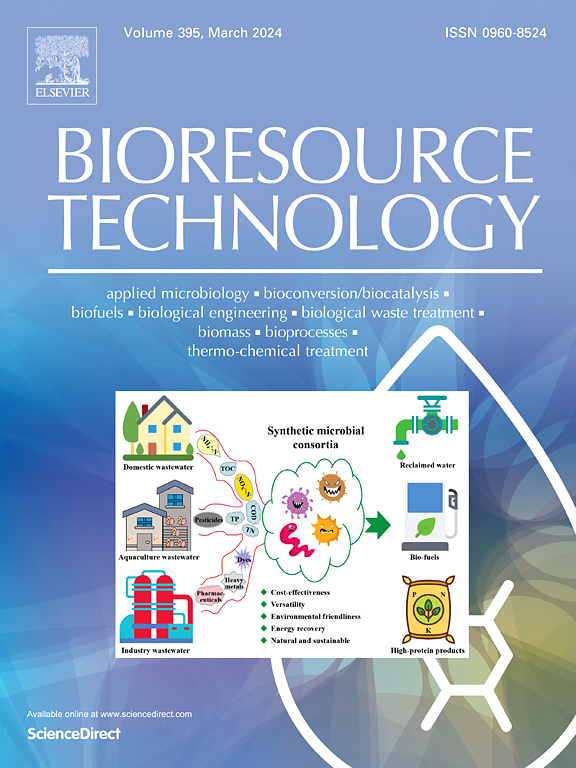Enhancing biobutanol production by optimizing acetone-butanol-ethanol fermentation from sorghum grains through strategic immobilization of amylolytic enzymes
IF 9.7
1区 环境科学与生态学
Q1 AGRICULTURAL ENGINEERING
引用次数: 0
Abstract
Tannin-containing sorghum grains, suitable for acetone-butanol-ethanol (ABE) production by Clostridium acetobutylicum, have required pretreatment to eliminate tannins inhibiting the strain’s amylolytic activity. This study investigates biobutanol production enhancement by immobilizing enzymes on polydopamine-functionalized polyethersulfone (PES) membranes with magnetic nanoparticles for Separated Hydrolysis and Fermentation (SHF) and Simultaneous Saccharification and Fermentation (SSF) processes. After multi-stage hot water treatment, TG3 sorghum (from the third stage) was used, where the enzyme-immobilized PES membrane produced 4.75 g/L of ABE (3.24 g/L butanol) under SSF, 0.85 g/L under SHF, and 1.1 g/L under simple fermentation. For TG6 (from the sixth stage), 3.23, 1.29, and 1.25 g/L of ABE was produced under SSF, SHF, and simple fermentation, respectively. This enhanced performance is due to the reduced enzyme inhibition. Reusability experiments showed that the membrane retained 30 % of initial activity after three cycles. These findings suggest that enzyme-immobilized membranes can intensify ABE production and enable integrated cell recovery.

通过策略固定化淀粉水解酶,优化高粱谷物丙酮-丁醇-乙醇发酵,提高生物丁醇产量。
适合醋酸丁酸梭菌(Clostridium acetobutylicum)生产丙酮-丁醇-乙醇(ABE)的含单宁高粱籽粒需要进行预处理,以消除抑制菌株解淀粉活性的单宁。本研究探讨了磁性纳米颗粒在聚多巴胺功能化聚醚砜(PES)膜上固定化酶对分离水解和发酵(SHF)和同时糖化和发酵(SSF)过程中生物丁醇生产的促进作用。经多段热水处理后,采用第三段TG3高粱,其中固定化PES膜在SSF下产ABE 4.75 g/L(3.24 g/L丁醇),在SHF下产ABE 0.85 g/L,在简单发酵下产1.1 g/L。对于TG6(从第6阶段开始),SSF、SHF和简单发酵的ABE产量分别为3.23、1.29和1.25 g/L。这种增强的性能是由于降低了酶的抑制作用。重复使用实验表明,经过三次循环后,膜保留了30 %的初始活性。这些发现表明,酶固定化膜可以加强ABE的产生,并使细胞整体恢复。
本文章由计算机程序翻译,如有差异,请以英文原文为准。
求助全文
约1分钟内获得全文
求助全文
来源期刊

Bioresource Technology
工程技术-能源与燃料
CiteScore
20.80
自引率
19.30%
发文量
2013
审稿时长
12 days
期刊介绍:
Bioresource Technology publishes original articles, review articles, case studies, and short communications covering the fundamentals, applications, and management of bioresource technology. The journal seeks to advance and disseminate knowledge across various areas related to biomass, biological waste treatment, bioenergy, biotransformations, bioresource systems analysis, and associated conversion or production technologies.
Topics include:
• Biofuels: liquid and gaseous biofuels production, modeling and economics
• Bioprocesses and bioproducts: biocatalysis and fermentations
• Biomass and feedstocks utilization: bioconversion of agro-industrial residues
• Environmental protection: biological waste treatment
• Thermochemical conversion of biomass: combustion, pyrolysis, gasification, catalysis.
 求助内容:
求助内容: 应助结果提醒方式:
应助结果提醒方式:


